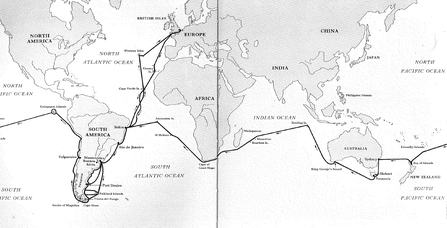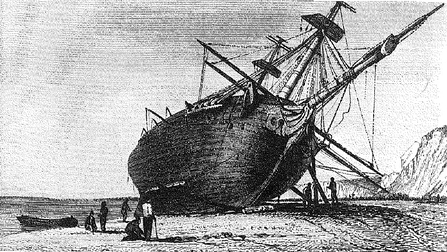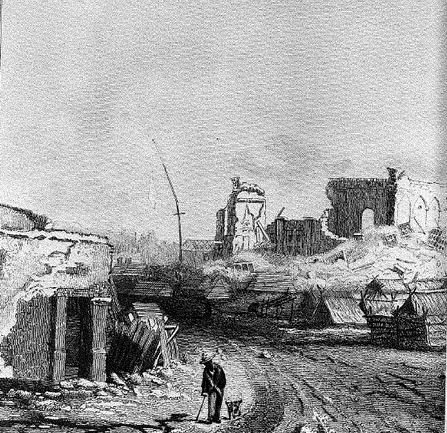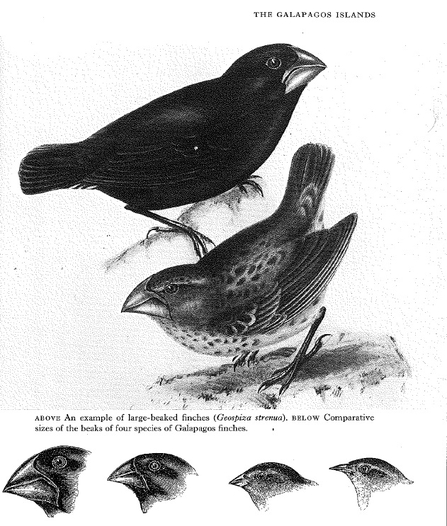
The Voyage of the Beagle, from Darwin and the Beagle, Alan Moorehead

The Voyage of the Beagle, from Darwin and the Beagle, Alan Moorehead
After many months of waiting for fine weather, The Beagle finally set sail on 27th December 1831, with the young 22 year old Charles Darwin on board. The aim of the voyage was to survey South America, to improve the accuracy of navigational information.
As the ship headed out through the Atlantic and the weeks passed by, Darwin suffered severe sea sickness ‘I found nothing but lying in my hammock did any good’. He could eat nothing but raisins.
The day’s routine on the ship was simple. Breakfast at 8, where Darwin and Captain Fitzroy ate alone, then each went off to their work. Darwin, weather permitting would observe, collect, note and classify the many marine species they came into contact with. In the evening the crew would talk. ‘I find a ship a very comfortable house’, he wrote to his father back in Shrewsbury.
The ship made good time, averaging 160 miles every 24 hours. Down the Brazilian coast, Darwin experienced his first tropical forest, in his journal he wrote:
the noise from the insects is so loud…such a day brings deeper pleasure than he can ever hope to experience again

The Beagle at Santa Cruz, The Andes, S America
Darwin lived ashore for a few months in Rio de Janeiro as the Beagle went north. He collected and experimented and sent specimens back to Cambridge.
Over the next few years, the ship sailed round South America. Past Argentina, round the southerly-most tip – Tierra del Fuego and north up the coast of Chile, chartering the coast line.
On 20 February 1835 a large earthquake struck south west Chile. The Beagle was moored off the coast. Shocking as it was for the crew, it was of immense interest to Darwin.

Details from a drawing by J.C.Wickham, first lieutenant on the Beagle
He spent weeks investigating the earthquake. He observed the effects of a tidal wave that carried sea shells 300m inland and on the coast, the land had risen by 2-3 feet. He reasoned that this had happened repeatedly over many years. Even more ambitiously, Darwin later came to connect earthquakes, volcanoes and vertical movements of the Earth's crust.
September 1835 and The Beagle reached the Galapagos archipelago, 10 islands formed of volcanic rocks. Here they stayed for one month and it was where Darwin began to form a coherent view of the evolution of life. Darwin realised that the different islands were home to different species, such as finches, whose beaks varied from island to island, developing dependant on the food source available. He observed tortoises and learned that it was possible to tell from which island a tortoise came, judging by its shell.

An example of large beaked finches above and below, sizes of the beaks of four species of Galapagos finch. from Darwin and the Beagle, Alan Moorehead
The ship left the Galapagos, heading home via Tahiti, New Zealand and Australia. These places did not really interest Darwin, by now he was longing for England ‘I feel sure that the scenery of England is ten times more beautiful than any we have seen’.
He arrived back in Shrewsbury on October 4 1836. When he turned up at The Mount unannounced, just as his father and sisters were sitting down to breakfast, Dr Darwin exclaimed ‘Why, the shape of his head is quite altered!’.
Darwin had quite enough adventure and was never to leave the shores of England again!
Adapted from The Voyage of Charles Darwin – his autobiographical writings selected and arranged by Christopher Ralling and Darwin and the Beagle by Alan Moorehead.